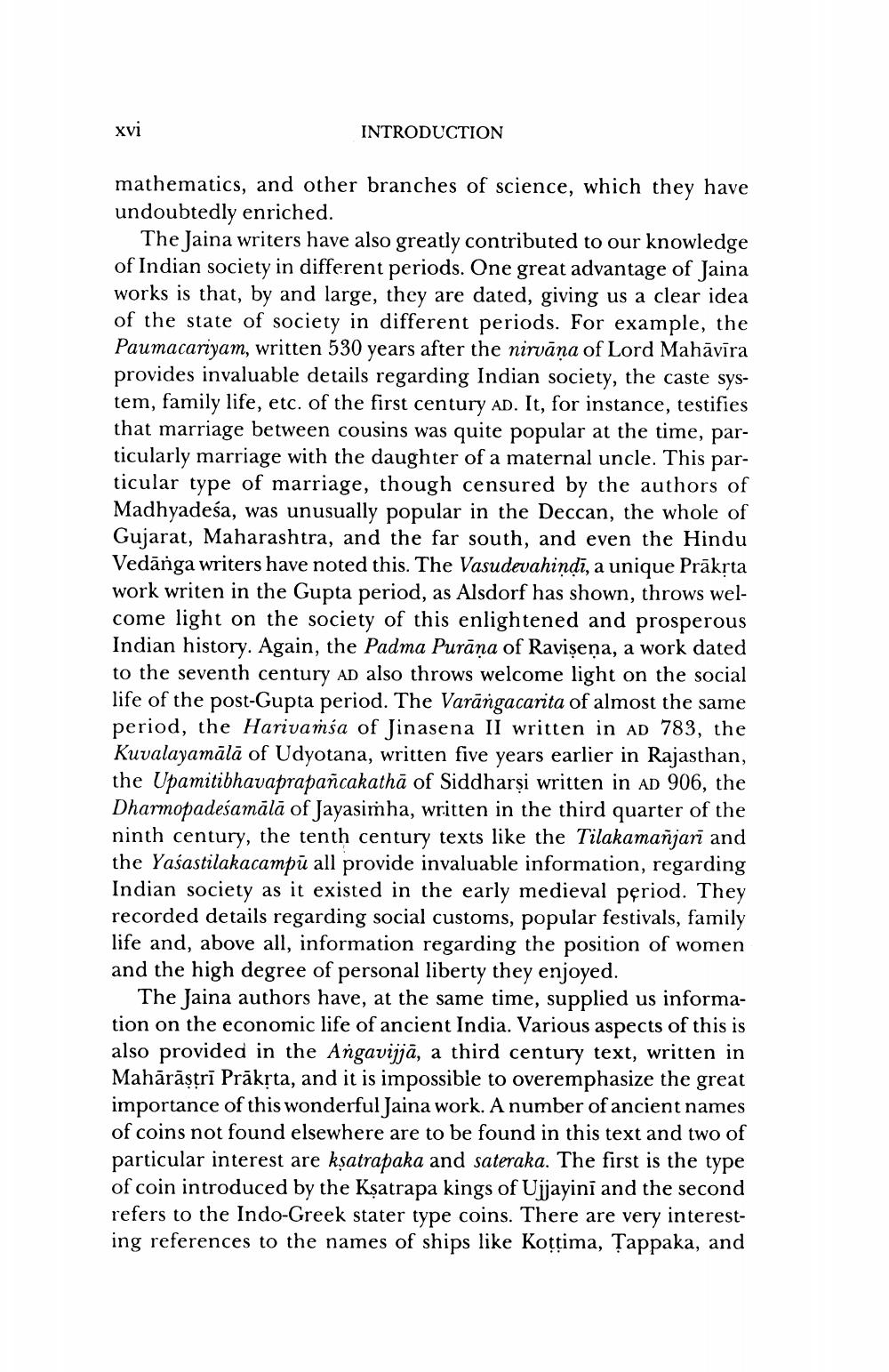________________
xvi
INTRODUCTION
mathematics, and other branches of science, which they have undoubtedly enriched.
The Jaina writers have also greatly contributed to our knowledge of Indian society in different periods. One great advantage of Jaina works is that, by and large, they are dated, giving us a clear idea of the state of society in different periods. For example, the Paumacariyam, written 530 years after the nirvana of Lord Mahāvīra provides invaluable details regarding Indian society, the caste system, family life, etc. of the first century AD. It, for instance, testifies that marriage between cousins was quite popular at the time, particularly marriage with the daughter of a maternal uncle. This particular type of marriage, though censured by the authors of Madhyadeśa, was unusually popular in the Deccan, the whole of Gujarat, Maharashtra, and the far south, and even the Hindu Vedānga writers have noted this. The Vasudevahindi, a unique Prākrta work writen in the Gupta period, as Alsdorf has shown, throws welcome light on the society of this enlightened and prosperous Indian history. Again, the Padma Purāņa of Ravişeņa, a work dated to the seventh century AD also throws welcome light on the social life of the post-Gupta period. The Varāngacarita of almost the same period, the Harivamśa of Jinasena II written in AD 783, the Kuvalayamālā of Udyotana, written five years earlier in Rajasthan, the Upamitibhavaprapañcakathā of Siddharși written in Ad 906, the Dharmopadeśamālā of Jayasimha, written in the third quarter of the ninth century, the tenth century texts like the Tilakamañjarī and the Yaśastilakacampū all provide invaluable information, regarding Indian society as it existed in the early medieval period. They recorded details regarding social customs, popular festivals, family life and, above all, information regarding the position of women and the high degree of personal liberty they enjoyed.
The Jaina authors have, at the same time, supplied us information on the economic life of ancient India. Various aspects of this is also provided in the Angavijjā, a third century text, written in Mahārāstrī Prākrta, and it is impossible to overemphasize the great importance of this wonderful Jaina work. A number of ancient names of coins not found elsewhere are to be found in this text and two of particular interest are kșatrapaka and sateraka. The first is the type of coin introduced by the Kșatrapa kings of Ujjayini and the second refers to the Indo-Greek stater type coins. There are very interesting references to the names of ships like Kottima, Tappaka, and




